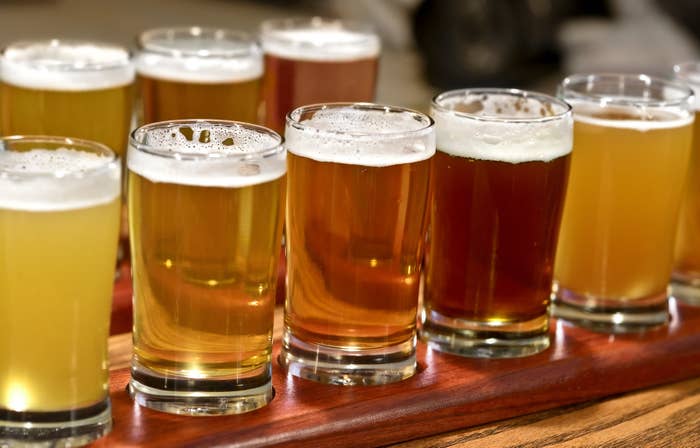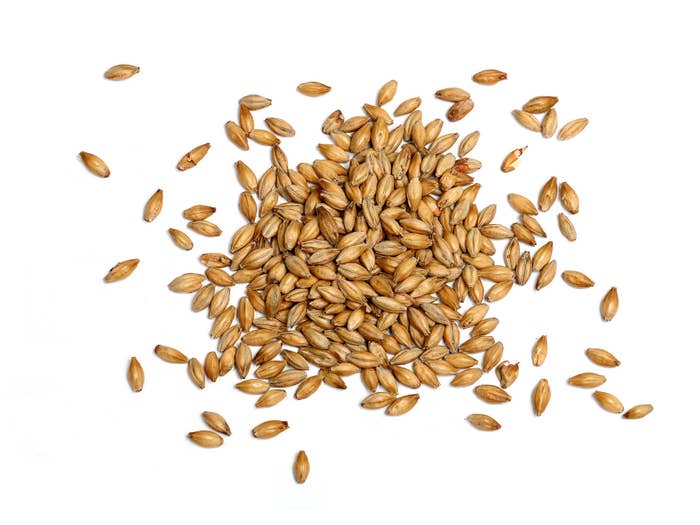
Bad news for beer fans — droughts and heat waves driven by global warming will hurt barley crops, likely doubling the price of beer in the coming decades, according to a study published on Monday.
By the end of this century, the study predicts, heat waves and droughts that damage barley will happen once every three years or so, leading to a roughly 16% drop in beer consumption compared to today.
“It kind of adds insult to injury. There’s a heat wave, so you want a beer. But it costs more,” study coauthor Nathan Mueller of the University of California, Irvine, told BuzzFeed News. “It hits close to home for people.”
Beer accounts for about 17% of worldwide barley production (livestock feed is another major use). In a future where global warming raises atmospheric temperatures over land about 5 degrees Celsius (about 9 degrees Fahrenheit) — the current “business as usual” track for the world — barley supply will drop around 15% by the end of the century.
The shortfalls will only hit in “extreme” years when both drought and lengthy heatwaves punish barley-growing parts of the world, according to the scientists’ models. And in those years, prices will roughly double.
The price will increase unevenly around the world, hitting harder in countries that depend on imports, like Ireland, where it will nearly triple, followed by other European countries, Canada, and Japan. Such increases will happen more often as we get closer to the end of the century. “It could happen next year, of course,” Mueller said. “It just loads the dice to happen more with each year.”

Even in the (increasingly unlikely) scenario in which global temperature increases are kept under 2 degrees Celsius, global beer consumption will drop 4% on average, and prices will increase by 15%, the study found. The worse the emissions in the future, the researchers say, the more the price of beer will rise. Other experts agree.
“Undoubtedly, it will cost more,” agricultural economist Gerald Nelson, professor emeritus at the University of Illinois, who was not part of the study, told BuzzFeed News. “The bottom line is we are already below adequacy on a whole lot of food, and it is not going to get better,” he said.
A separate study published last week in Nature found that by 2050, feeding a projected world population of around 10 billion people (3 billion more than today) will deplete water supplies and cause pollution by 50% to 90% more. Other studies have found similar impacts on staples such as wheat, corn, soybeans, and rice.
But Nelson questioned some of the assumptions in the beer study, suggesting that its emphasis on years with extreme droughts and heat waves may miss the overall effects of higher temperatures on barley and other food. Higher temperatures alone may lead to lower nutrient levels in crops, for example, or alter their health. “It will affect everything,” he said. “We may figure out how to keep barley yields high, but it will be lousy barley, and it will still make crappy beer.”
Agricultural economist Johan Swinnen of the LICOS Center for Institutions and Economic Performance at the KU Leuven in Belgium was more skeptical that barley price increases would squeeze up the price of beer.
Distribution, marketing, packaging, monopoly pricing by large brewers in some markets, and taxes are much more important in determining beer prices now, Swinnen told BuzzFeed News, by email. "So even a significant increase in the barley price would not in itself have a major effect on the cost of beer."
Major beer markets like the US and China favor beers whose major input is rice, added Swinnen, author of Beeronomics: How Beer Explains the World. "It seems to me that the future demand for grains for animal feed, human food and biofuels will more likely be a more important determinant of grain prices, and thus the cost of malting barley," he said.
The study also did not look at income growth worldwide by the end of the century, which might drive an increased demand for meat and beer, likely making the price increases steeper, Mueller said.
The study does emphasize the uneven distribution of global warming’s impacts, with the biggest crop decreases happening in Central America, South America, and Central Africa, and perhaps slight increases in China and the US, where the higher temperatures would make it easier to grow barley than before. Countries with the most expensive beer today, such as Australia and Japan, might not see the biggest price increases, since they might import barley from Asia to make up shortfalls.
UPDATE
This post has been updated with comments from Johan Swinnen.
